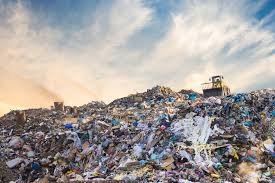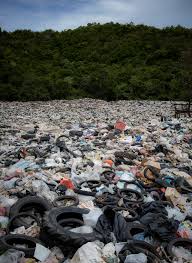Land filling is an economical method of waste disposal in developing countries, which involves pitching refuses into depression, mining void, excavated land or borrowed pits. It is the most traditional way of waste disposal practiced in many countries.
The great majority of waste generated in developing countries is mainly of domestic origin consisting of mostly food waste, green waste and relatively low concentrations of toxic materials.
Consequently, there is less of a need for a sophisticated landfill liner system of the type required for the waste generated from industrialized countries.
Advantages and disadvantages of landfills
The major advantage associated with land filling of wastes is the low cost of landfill compared with other disposal options and the fact that a wide variety of wastes are suitable for landfill. Also, in many cases, there is a strong interaction of the minerals extraction process with the infilling of the void space with waste.
Extraction of rock materials has produced and continues to produce large holes in the ground, which at some stage require infilling. Mineral extraction plans usually include the restoration of the site after completion of the extraction. Infilling of the mineral workings by waste is therefore an economical advantage for the site developer.
Read Also : Proper Waste Reduction Process
The collection and utilization of landfill gas as a fuel for energy generation is also an advantage. However, landfill achieves a lower conversion of the wastes into energy with about one-third less energy recovery per ton from landfill gas than incineration.

This is mainly due to the conversion of the organic materials in the waste into non-combustible gases and leachate and general losses from the system.
There are however, some disadvantages with landfill. Older sites which are, in some cases, still under current use or have long been disused, were constructed before the environmental impacts of leachate and landfill gas were realized. Many of these sites are now sources of pollution with uncontrolled leakages.
Read Also : Proper Waste Recycle Process
Landfill gas in particular can be hazardous since the largest component, methane, can reach explosive concentrations. Landfill gas methane is also a ‘greenhouse gas’, leading to the problems of global warming. The contribution to total methane emissions from landfill gas has been estimated by the European Commission to be 32%.

